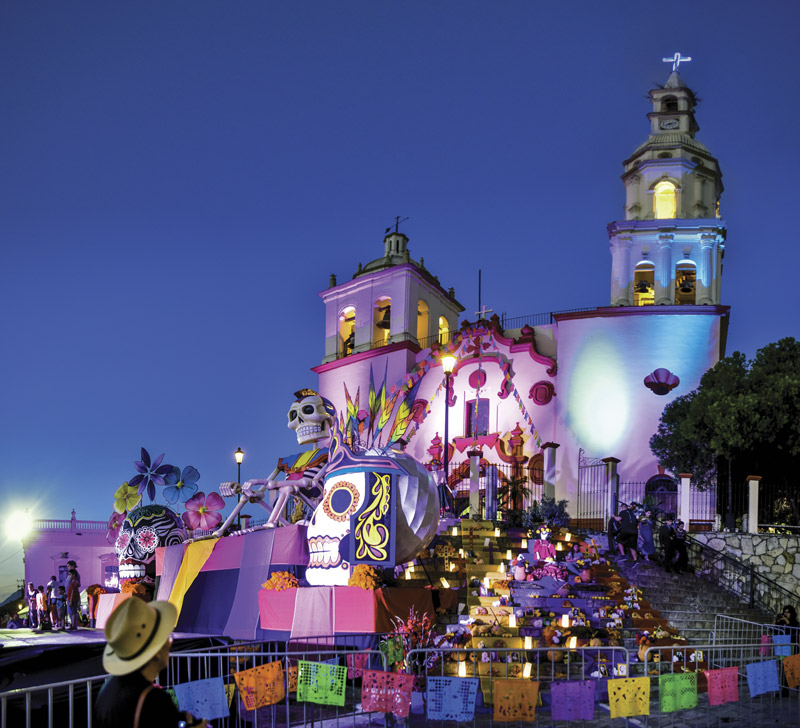
Day of the Dead in Villa de Santiago and Its Graveyard Rituals
Santiago’s cemetery, Panteón Municipal de Santo Domingo, is where the elderly, the young, and children come to bring back the memories of their dead.

On November 2nd, the people of Santiago wistfully decorate their loved ones’ last resting places year after year. They make archways with hundreds of marigold flowers whose orange and yellow tones symbolize the earth. White flowers signify purity and the heavens, and purple ones convey mourning.
Next, they lovingly arrange bananas, sugar cane, mandarin oranges, Mexican hawthorn fruit, and in the place of honor, a basket full of bread. A photograph of the deceased person is placed at the top, then candles are lit, forming a ray of light to illuminate the path for the spirits. Finally, fragrant copal incense is scattered around to remove the bad energy and open the passageways. Then, well into the night, the world of the living and the world of the dead can intermingle.
From October 31st to November 2nd, the dead are remembered in this Magical Town’s downtown with an enormous offering on the stairs of Parroquia de Santiago Apóstol. Called the Altar de los Nuestros (the Altar of Our Loved Ones), it is decked out with strings of colorful papel picado (paper with elaborately cut designs) crisscrossing the Plaza Central. Each step has elegant paper-mache catrina skeleton figures, flowers, candles, and monumental multi-colored skulls that crown the offering.
Meanwhile, there are dances and pre-Hispanic and colonial theater groups perform. Several altars dedicated to famous Mexican cultural figures are displayed in Plaza Ocampo.
The celebration concludes with a traditional callejoneada in which La Llorona (weeping woman), the catrina (an elegant skeletal lady), a devil, and doleful nun process through downtown’s cobblestone streets to the rhythm of folk music.
Santiago, Nuevo León, México
See map